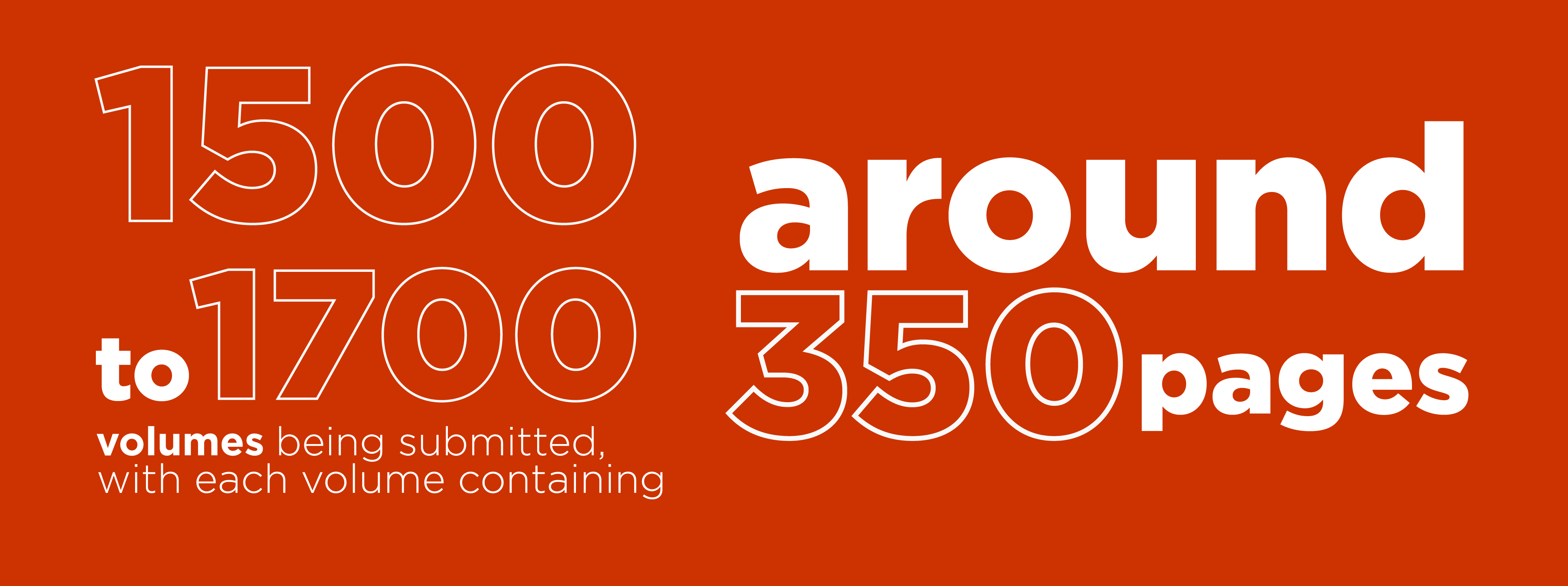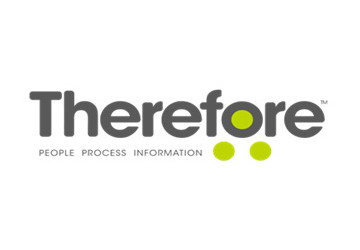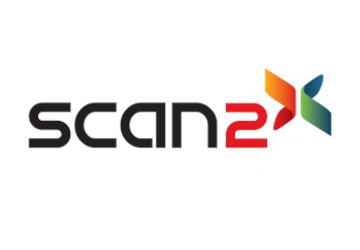Taking the national Notarial Archives from a situation with low productivity and high paper storage and printing costs to an efficient office with a focus on excellent customer service, long term archiving while reducing its environmental footprint. Read about how we enabled this with Scan2x and Therefore™.
The Office of the Notary to Government currently contains over 65,000 bound volumes of notarial deeds dated back to 1465 A.D and it is visited by notaries and the general public to order hard copies of public contracts or wills.
What were your challenges before you embarked on this digitization project?
One of the main challenges before embarking on this project was that each time a new contract or will was scanned and printed, the copy was not saved.
Therefore, if new clients requested the same document at a later stage, it had to be scanned each time, which was very time-consuming.
In addition, each copy was delivered on paper, which meant that the Notary’s office used enormous amounts of paper, increasing the department’s expenditure and making it less environmentally friendly.
Another challenge we faced was that the service was not as efficient as required.
Our customers had to come to the Office to submit an order and again to collect the copy and pay, this meant that the Office was often overloaded with customers and the Front Office employees were generally overwhelmed. This meant that the public often had to wait five working days.
Taking the national Notarial Archives from a situation with low productivity and high paper storage and printing costs to an efficient office with a focus on excellent customer service, long term archiving while reducing its environmental footprint. Read about how we enabled this with Scan2x and Therefore™.
The Office of the Notary to Government currently contains over 65,000 bound volumes of notarial deeds dated back to 1465 A.D and it is visited by notaries and the general public to order hard copies of public contracts or wills.
What were your challenges before you embarked on this digitization project?
One of the main challenges before embarking on this project was that each time a new contract or will was scanned and printed, the copy was not saved.
Therefore, if new clients requested the same document at a later stage, it had to be scanned each time, which was very time-consuming.
In addition, each copy was delivered on paper, which meant that the Notary’s office used enormous amounts of paper, increasing the department’s expenditure and making it less environmentally friendly.
Another challenge we faced was that the service was not as efficient as required.
Our customers had to come to the Office to submit an order and again to collect the copy and pay, this meant that the Office was often overloaded with customers and the Front Office employees were generally overwhelmed. This meant that the public often had to wait five working days.
Which were the main pain points you wanted to address through the solutions you opted for?

Efficiency and convenience: We wanted the client to be able to request informal and legalised copies of deeds and wills as well to track an order and purchase documents from the ease of their homes or offices without the need to visit our department.

Time-saving: With an online system we would help to eliminate waiting time for the online customer, and our office would be able to better serve those customers who would opt still visit us, as the number of clients coming to the department would be reduced.

Reduced workload: We wanted to reduce the workload of the front office employees so that they could focus on other tasks.

Accessibility and preservation: With an online system our aim is to provide better access to the notaries and the general public of the Notarial Volumes found in the Archives, while at the same time allowing for better preservation of the Archives due to reduced file movements between offices.

“The system has greatly improved the Office’s operation resulting in a more efficient service to the client while also making the Office’s operation smoother, increased efficiency, better time saving, and cost reduction in processing both orders and repeated volumes.”
Mario Zammit – Senior Systems Administrator
What was your main problem regarding physical storage and your operation workflow? How Scan2x and Therefore™ helped you solved these issues?
One of the main challenges that the Office of the Notary to Government is facing is that due to the always-increasing number of notarial volumes being submitted to the archives, storage space is becoming extremely limited. We have over 90.000 original volumes that need to be digitised.
In fact, the archives were facing a problem that it no longer had any shelves available for newly submitted notarial volumes.
On average every year there are between 1500 to 1700 volumes being submitted, with each volume containing around 350 pages.
The problem was so severe that the Office issued a tender to lease a new storage space where it could move some of its volumes to a remote location. Nevertheless, this presented another challenge since contracts found in these volumes are requested and it would really prolong the process of retrieving several volumes daily.
With the help of Avantech’s solution, before leaving for the remote storage location, these volumes are being scanned and edited by the digitisation team with Scan2x.
Since overhead scanners are being used, the scanned area is not always perfect. However, with Scan2x cropping functionality, these are perfected.
Scan2x also provides other functionalities which include editing a file’s metadata, OCR, and splitting documents amongst other features which are very useful for the Office’s purposes.
Once a volume is scanned and edited by a user, Scan2x makes it machine-readable with OCR. When ready, the document is uploaded directly to the Therefore Document Management System where they are stored and made available online immediately. Another very useful feature of Scan2x which saves the Office valuable time is that once the user is finished editing a document, Scan2x proceeds to process the document according to the pre-set settings in the background, thus the user can continue working without any interruption.
When a notarial volume has been fully digitised it is then transferred to the new storage location without the worry that if a request for a contract in that volume is requested the Office would need to physically retrieve it since it is digitally available 24/7 for all notarial archives’ employees, notaries, and the general public.
“The system has greatly improved the Office’s operation resulting in a more efficient service to the client while also making the Office’s operation smoother, increased efficiency, better time saving, and cost reduction in processing both orders and repeated volumes.”
Mario Zammit – Senior Systems Administrator

What was your main problem regarding physical storage and your operation workflow? How Scan2x and Therefore™ helped you solved these issues?
One of the main challenges that the Office of the Notary to Government is facing is that due to the always-increasing number of notarial volumes being submitted to the archives, storage space is becoming extremely limited. We have over 90.000 original volumes that need to be digitised.
In fact, the archives were facing a problem that it no longer had any shelves available for newly submitted notarial volumes.
On average every year there are between 1500 to 1700 volumes being submitted, with each volume containing around 350 pages.
The problem was so severe that the Office issued a tender to lease a new storage space where it could move some of its volumes to a remote location. Nevertheless, this presented another challenge since contracts found in these volumes are requested and it would really prolong the process of retrieving several volumes daily.
With the help of Avantech’s solution, before leaving for the remote storage location, these volumes are being scanned and edited by the digitisation team with Scan2x.
Since overhead scanners are being used, the scanned area is not always perfect. However, with Scan2x cropping functionality, these are perfected.
Scan2x also provides other functionalities which include editing a file’s metadata, OCR, and splitting documents amongst other features which are very useful for the Office’s purposes.
Once a volume is scanned and edited by a user, Scan2x makes it machine-readable with OCR. When ready, the document is uploaded directly to the Therefore Document Management System where they are stored and made available online immediately. Another very useful feature of Scan2x which saves the Office valuable time is that once the user is finished editing a document, Scan2x proceeds to process the document according to the pre-set settings in the background, thus the user can continue working without any interruption.
When a notarial volume has been fully digitised it is then transferred to the new storage location without the worry that if a request for a contract in that volume is requested the Office would need to physically retrieve it since it is digitally available 24/7 for all notarial archives’ employees, notaries, and the general public.


“The software is user-friendly, all the employees once they have the proper training find that it is a simple process, and it is not at all time-consuming. Even our cataloguers are finding it very easy to upload all the documents online for outlines.”
Dr. Keith Francis German – Chief Notary to the Government and Director
“The software is user-friendly, all the employees once they have the proper training find that it is a simple process, and it is not at all time-consuming. Even our cataloguers are finding it very easy to upload all the documents online for outlines.”
Dr. Keith Francis German – Chief Notary to the Government and Director

Can you tell us how you implemented this project of digitalization in the Office?
STAGE 1
In the first stage, we concentrated on solving the first problem of not having the documents scanned and stored in an online system.
For this reason, we used a combination of Scan2x installed locally on several machines and Therefore Document Management System hosted in the Azure environment.
STAGE 2
These two software programs work in tandem through an integration provided by Avantech.
Scan2x is used as an Intelligent Capture solution to scan incoming documents and automatically extract relevant metadata. The scanned and processed documents are uploaded directly into the Therefore™ Document Management System.
STAGE 3
Once uploaded, the documents are immediately available in the Notarial Acts Portal.
This also meant that once a public deed and Will was scanned, it would not be required to be scanned again since the soft copy was saved and available 24/7 and the client would be able to access it immediately once informed without physically needing to visit the department.
Can you tell us how you implemented this project of digitalization in the Office?
STAGE 1
In the first stage, we concentrated on solving the first problem of not having the documents scanned and stored in an online system.
For this reason, we used a combination of Scan2x installed locally on several machines and Therefore Document Management System hosted in the Azure environment.
STAGE 2
These two software programs work in tandem through an integration provided by Avantech.
Scan2x is used as an Intelligent Capture solution to scan incoming documents and automatically extract relevant metadata. The scanned and processed documents are uploaded directly into the Therefore™ Document Management System.
STAGE 3
Once uploaded, the documents are immediately available in the Notarial Acts Portal.
This also meant that once a public deed and Will was scanned, it would not be required to be scanned again since the soft copy was saved and available 24/7 and the client would be able to access it immediately once informed without physically needing to visit the department.
“Working with Avantech on the implementation of this system was a pleasure and I am very satisfied with the level of professionality shown and the ease of communication during the implementation and maintenance of the system. Apart from understanding our needs, they also provided insights and ideas from their own experience on how we can improve the system to provide a better experience for both internal and external users.”
Mario Zammit – Senior Systems Administrator
“Working with Avantech on the implementation of this system was a pleasure and I am very satisfied with the level of professionality shown and the ease of communication during the implementation and maintenance of the system. Apart from understanding our needs, they also provided insights and ideas from their own experience on how we can improve the system to provide a better experience for both internal and external users.”
Mario Zammit – Senior Systems Administrator
What results did The Notarial Archives achieve through Therefore™ and Scan2x?
Cost reduction in the office, more profit, and efficiency in the working system.
Through the Notarial Acts Portal developed specifically for the Office of the Notary to Government, notaries and the general public could now submit an order through the Portal without having to come to the Office, and once the order was ready the client could access the required documents online after purchasing them.
This drastically reduced the number of customers coming to the Office and reduced the amount of paper used.
This has also led to an increase in profits, as copies are no longer supplied on paper, meaning that the department has drastically reduced its overall expenditure in this regard.
Efficiency and productivity
The system has also helped to keep track of orders, knowing what stage they are currently at, which has reduced the number of problems that used to occur in the past. This has helped to serve the customer more efficiently.
Another advantage for the office is that most transactions are now done online. This meant that cash transactions were greatly reduced, which helped to reduce cash handling by both the front office employees and the Accounts sections.
The system also helped the customer to be able to order and purchase the required document without having to visit the office. This made external customers more efficient.
Reduced processing and customer service time
Since the new system was introduced and thanks to the ease of use of Scan2x, the processing time has been greatly reduced and the average time it takes for a customer to be served has been reduced from an average of five working days to three, a gain of 40% in overall productivity.
An average of 13,000 documents are uploaded into the system each month, which means more than 70,000 pages are scanned and correctly categorised monthly. This means that the Office is handling an average of 3,000 orders monthly within three working days, which is more efficient than before.
What results did The Notarial Archives achieve through Therefore™ and Scan2x?
Cost reduction in the office, more profit, and efficiency in the working system.
Through the Notarial Acts Portal developed specifically for the Office of the Notary to Government, notaries and the general public could now submit an order through the Portal without having to come to the Office, and once the order was ready the client could access the required documents online after purchasing them.
This drastically reduced the number of customers coming to the Office and reduced the amount of paper used.
This has also led to an increase in profits, as copies are no longer supplied on paper, meaning that the department has drastically reduced its overall expenditure in this regard.
Efficiency and productivity
The system has also helped to keep track of orders, knowing what stage they are currently at, which has reduced the number of problems that used to occur in the past. This has helped to serve the customer more efficiently.
Another advantage for the office is that most transactions are now done online. This meant that cash transactions were greatly reduced, which helped to reduce cash handling by both the front office employees and the Accounts sections.
The system also helped the customer to be able to order and purchase the required document without having to visit the office. This made external customers more efficient.
Reduced processing and customer service time
Since the new system was introduced and thanks to the ease of use of Scan2x, the processing time has been greatly reduced and the average time it takes for a customer to be served has been reduced from an average of five working days to three, a gain of 40% in overall productivity.
An average of 13,000 documents are uploaded into the system each month, which means more than 70,000 pages are scanned and correctly categorised monthly. This means that the Office is handling an average of 3,000 orders monthly within three working days, which is more efficient than before.
“This resulted in a system that exceeded our expectations and has facilitated everyone’s job at the Office of the Notary to Government while also receiving lots of praise from external clients that use it daily.”
Mario Zammit – Senior Systems Administrator
“This resulted in a system that exceeded our expectations and has facilitated everyone’s job at the Office of the Notary to Government while also receiving lots of praise from external clients that use it daily.”
Mario Zammit – Senior Systems Administrator
What are your plans for further automation within Notarial Archives?
The online application, notarialacts.gov.mt, developed by Avantech has already reduced the workload on the archives’ employees processing the daily requests, which amounts to an average of 150 to 200 orders.
The system automatically indexes the volume in which the contract requested is found and populates the fields of the volume’s location. Previously this was being done manually which means that a job that previously required around an hour and a half is now fully automated by the system.
To further reduce the workload of the archives’ employees, and thus making them available for other tasks, the Office is thinking about further fully automating the ordering processing.
Currently, the incoming orders are being printed and the book retrievers are given the 150 to 200 orders in print format. This makes it quite difficult to manage printed orders since they are quite easy to misplace or lose.
The Office is looking to automate this process by having a PC installed in each archive room that shows which books are required from that room, thus eliminating the need for printed orders.
This would make the processing of the order more seamless since currently the orders are printed only two times a day and then they need to be sorted by room. Through this automated feature, once an order is submitted from an external user, it will automatically and immediately indicate the required volume from each room. Once the volume required is retrieved, the Officer can then mark the volume as retrieved and the volume can be taken for scanning and editing through Scan2x.
What are your plans for further automation within Notarial Archives?
The online application, notarialacts.gov.mt, developed by Avantech has already reduced the workload on the archives’ employees processing the daily requests, which amounts to an average of 150 to 200 orders.
The system automatically indexes the volume in which the contract requested is found and populates the fields of the volume’s location. Previously this was being done manually which means that a job that previously required around an hour and a half is now fully automated by the system.
To further reduce the workload of the archives’ employees, and thus making them available for other tasks, the Office is thinking about further fully automating the ordering processing.
Currently, the incoming orders are being printed and the book retrievers are given the 150 to 200 orders in print format. This makes it quite difficult to manage printed orders since they are quite easy to misplace or lose.
The Office is looking to automate this process by having a PC installed in each archive room that shows which books are required from that room, thus eliminating the need for printed orders.
This would make the processing of the order more seamless since currently the orders are printed only two times a day and then they need to be sorted by room. Through this automated feature, once an order is submitted from an external user, it will automatically and immediately indicate the required volume from each room. Once the volume required is retrieved, the Officer can then mark the volume as retrieved and the volume can be taken for scanning and editing through Scan2x.
The Notarial Archives is an archive in Valletta, Malta, that contains about 20,000 volumes of contracts, wills and other legal documents from the 15th century to the present day. Its collections are significant both from a legal and historical point of view, and they include Il-Kantilena, the earliest known text in the Maltese language.
The Notarial Archives is an archive in Valletta, Malta, that contains about 20,000 volumes of contracts, wills and other legal documents from the 15th century to the present day. Its collections are significant both from a legal and historical point of view, and they include Il-Kantilena, the earliest known text in the Maltese language.
Interested to know more on how we can help you automate your business workflow and in turn your profits?


